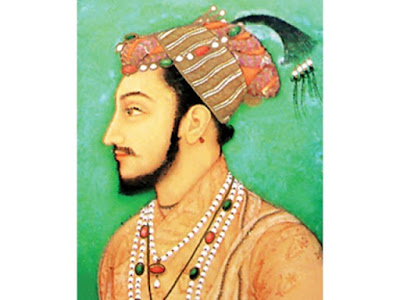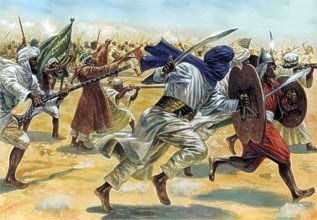Dara’s makeover by Dr Mubarak ALI
Generally, history remembers the victor and forgets the vanquished. However, in some cases to project the image of the winner, his qualities are highlighted while his opponents are downgraded for being inexperienced, incapable and incompetent. In other cases, the loser is projected as energetic and talented but nevertheless unable to defeat his opponent who might have triumphed solely through his determination. In the third case, the loser is completely ignored or treated ignominiously and fails to achieve a place in history.
Contemporary historians present Aurangzeb as a brave, dashing and shrewd politician and diplomat. One who could foresee the advent of the civil war and therefore made sure that he was prepared for it by maintaining good relations with influential Mughal nobles and winning over his younger brother Murad, who was a valiant and dauntless warrior.
On the other hand, Dara Shikoh does not get favourably treated in the chronicles of history as he lost the battle of Samugarh and is criticised for being arrogant, vain, inexperienced and lacking expertise in diplomacy. He heavily relied on the support of his father, Shah Jahan who wanted him to be his successor. When historians describe the battle of Samugarh (1658), Aurangzeb emerges as the man who understood the art of warfare and showed his determination by chaining the feet of his elephant so as to stay in the thick of the battle and inspire his soldiers. On the other hand, Dara failed to understand the strategy on the battlefield and fell short of matching Aurangzeb’s tactics. This defeat in the battlefield proved disastrous for Dara Shikoh.
As societies evolve, heroes become villains and vice versa
Modern historiography, however, developed with the emergence of democracy, liberalism and pluralism, thereby changing traditional narratives of history. In modern history-writing religious extremism is condemned and criticised as being detrimental to the progress of a society. Under these new milieus, Mughal history has been reinterpreted by modern historians and the image of Dara Shikoh which was previously damaged by historians has been revived. According to Hegel, an epoch is only re-evaluated when it finally ends hence with all the sources that are now available, it has become possible for historians to re-assess the Mughal past. The entire reign of Aurangzeb and the impact of his orthodoxy which lead to the disintegration and decay of the Mughal Empire have been taken into consideration. Historians have compared both Aurangzeb and Dara Shikoh on the basis of their ideas and thoughts.
Dara Shikoh attracts favourable public opinion because Aurangzeb, his younger brother not only mistreated him but finally had him executed. Bernier, the French traveller, who visited India from 1652 to 1658, was an eyewitness to Dara’s pathetic condition.
As per modern documentation of history, Aurangzeb caused a break-down of the society by deviating from the Sulh-i-Kul policy of Akbar which harmonised the Hindus and Muslim culturally and politically. Aurangzeb’s use of religion for his political ends alienated Hindus, who so far had supported the Mughal Empire. On the other hand, Dara Shikoh is depicted as a liberal who believed in pluralism and religious tolerance. A devotee of mysticism and the author of Majma-ul-Bahrain and Safina-tul-Auliya, he enjoyed the company of Sufis, yogis and saints. On the basis of these qualities, some historians have speculated that in case of his succession to the throne, the decay and downfall of the Mughal Empire may not have happened and it might have flourished longer.
Dara Shikoh attracts favourable public opinion because Aurangzeb, his younger brother not only mistreated him but finally had him executed. Bernier, the French traveller, who visited India from 1652 to 1658, was an eyewitness to Dara’s pathetic condition. In an account of when Aurangzeb decided to parade Dara as a prisoner in the streets of Dehli, Bernier wrote:
“Dara was now seen seated on a miserable and worn-out animal … the crowed assembled upon this disgraceful occasion was immense; and everywhere I observed the people weeping, and lamenting the fate of Dara in the most touching language. I took my station in one of the most conspicuous parts of the city, in the midst of the largest bazaar; was mounted on a good horse, and accompanied by two servants and two intimate friends. From every quarter I heard piercing and distressing shrieks, for the Indian people have a very tender heart; men, women, and children wailing as if some mighty calamity had happened to them.”
Bernier also wrote that Malik Jivan Khan, the man who betrayed Dara and handed him over to Aurangzeb as a prisoner, was the target of people’s wrath and they cursed and abused him. According to Bernier, “Gion-kan rode near the wretched Dara; and the abusive and indignant cries that vociferated as the traitor moved along were absolutely deafening. I observed some fakirs and several poor people throw stones at the infamous Pathan …”
The account of Bernier is corroborated by Khafi Khan’s description in Muntakhab-ul-lubab which shows the popularity of Dara among the ordinary people, who were moved by his miserable condition and agonised by the fate of the prince. Though Dara Shikoh is defeated politically, he wins his case as a liberal, secular, and tolerant prince. He is now symbolised, like Akbar, as a champion of peace and harmony. History may forget Dara as one of the ‘vanquished’ but will continue to remember him as a scholar and an outstanding figure.
sources :
- special thanks to sir Nofil for encouraging and making us know of topics to search on
- Published in Dawn, Sunday Magazine, June 21st, 2015




Comments
Post a Comment